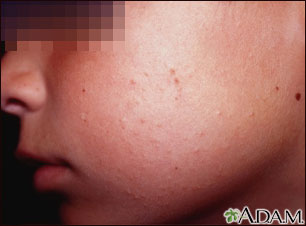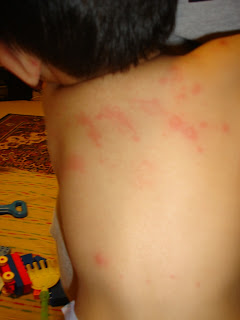Antibacterial Treatment Does Little to Reduce Staph Colonization, but Reduces Eczema Severity Nonetheless
I have a special interest in the treatment of severe eczema, and for years have been recommending to my patients treatments designed to reduce the burden of the bacteria known as staphylococcus aureus. Staph aureus, as it is commonly known, colonizes the skin and nose of up to 90% of patients with atopic dermatitis, or eczema. This not only can lead to infections in inflamed skin, but can also contribute to worsening of eczema when patients develop an allergy to the toxins produced by the bacteria.
The mainstays of antibacterial therapy for control of staph aureus colonization are: oral antibiotics, nasal antibiotics, and dilute bleach baths. The traditional thinking has been that implementing these measures would reduce the bacterial burden, thereby improving the condition of the skin.
Now, a fascinating study in the September issue of Pediatrics has turned the traditional wisdom on its head. Sure enough, patients treated with the anti-staph cocktail therapy had better outcomes than those treated with oral antibiotics alone, but there was no decrease in the levels of staph aureus colonization (80% before treatment, 82% after)!
So, the question is: why does the antibacterial regimen work if the bacteria are still there? The only explanation I can come up with is that perhaps the anti-staph treatments decreased the production of superantigen toxins which increase staph's infective ability and predispose patients to increased allergy in the skin. I'd be interested to see the results of a study examining the effects of bleach baths and intranasal antibiotics on staph superantigen production...
The mainstays of antibacterial therapy for control of staph aureus colonization are: oral antibiotics, nasal antibiotics, and dilute bleach baths. The traditional thinking has been that implementing these measures would reduce the bacterial burden, thereby improving the condition of the skin.
Now, a fascinating study in the September issue of Pediatrics has turned the traditional wisdom on its head. Sure enough, patients treated with the anti-staph cocktail therapy had better outcomes than those treated with oral antibiotics alone, but there was no decrease in the levels of staph aureus colonization (80% before treatment, 82% after)!
So, the question is: why does the antibacterial regimen work if the bacteria are still there? The only explanation I can come up with is that perhaps the anti-staph treatments decreased the production of superantigen toxins which increase staph's infective ability and predispose patients to increased allergy in the skin. I'd be interested to see the results of a study examining the effects of bleach baths and intranasal antibiotics on staph superantigen production...
![Reblog this post [with Zemanta]](http://img.zemanta.com/reblog_e.png?x-id=6ae497e4-0675-489d-929e-739fbbffa5f6)



Comments
Post a Comment
Thanks for taking the time to comment on this blog's posts! Let's keep the discussion engaging and free of frivolous advertising or vulgarity. It's a family show, folks!